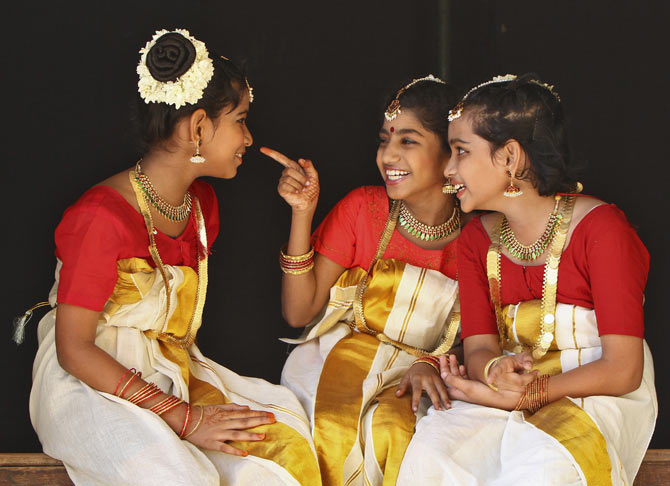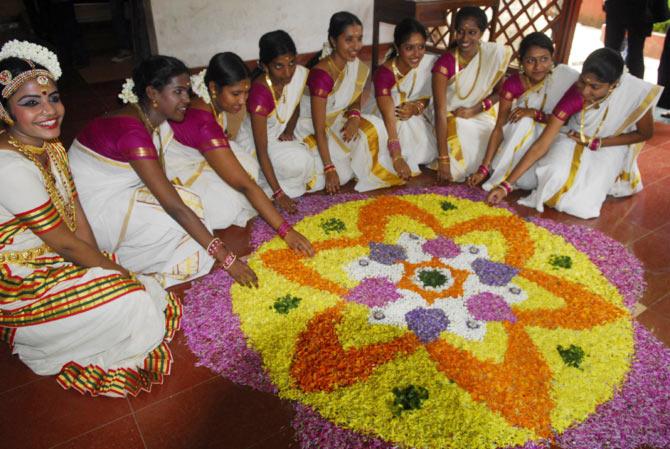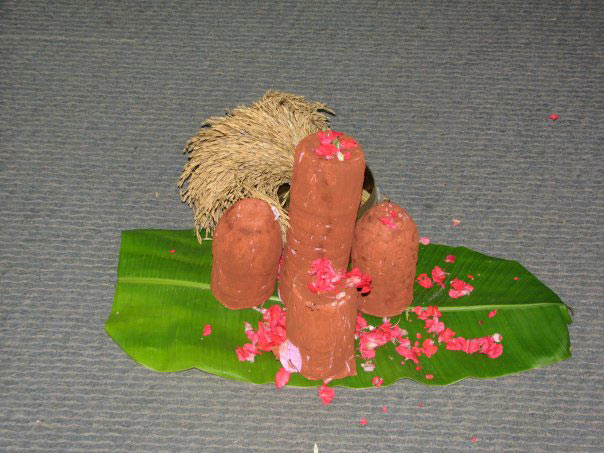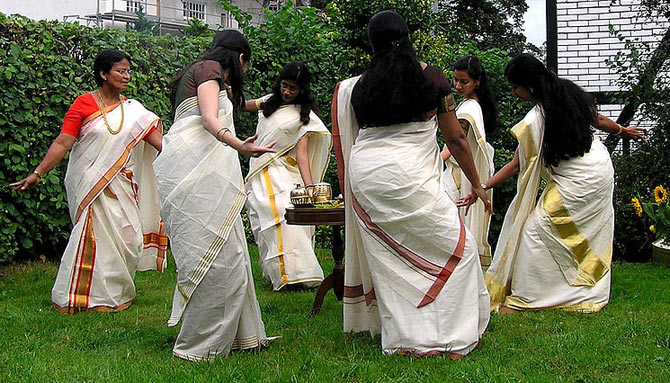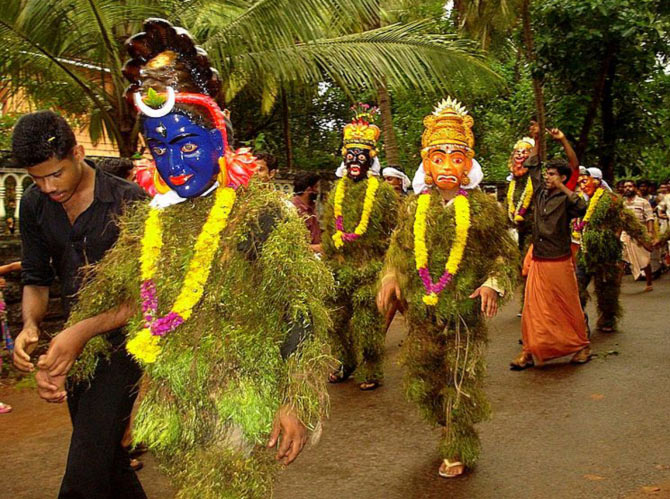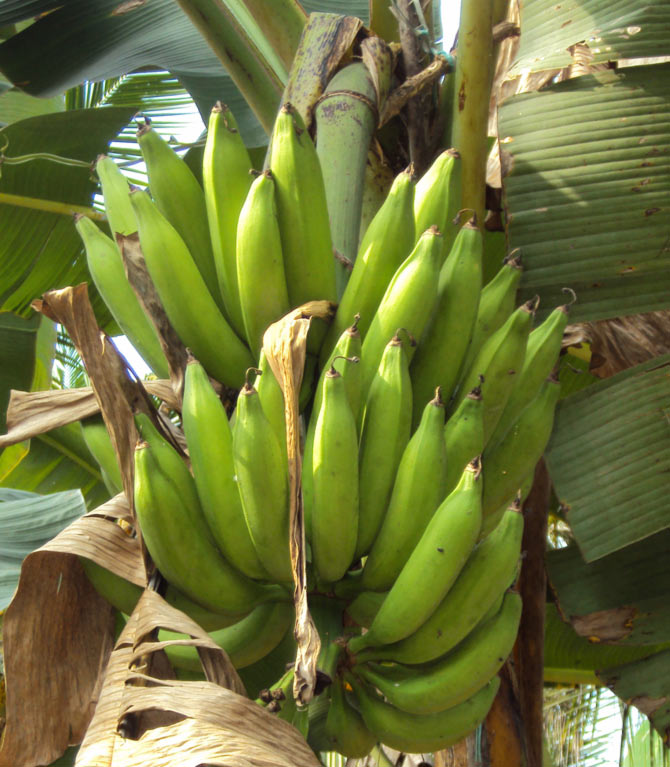 | « Back to article | Print this article |
CHECK OUT: This is how Kerala celebrates Onam
You may be surprised to learn that worshipping the Mahabali, making a pookalam and having the Onasadhya are just a miniscule part of the elaborate festival. Find out how people from different parts of Kerala celebrate the ten-day festival.
With elaborate feasting and a host of colourful activities and celebrations planned across the state, Onam is undoubtedly the biggest festival of Kerala.
While most Keralites celebrate it as a harvest festival, a famous and popular legend is also that of the erstwhile King Mahabali visiting the people of Kerala on Onam.
When King Mahabali was defeated and sent to paathaal (netherland) by Vamana, an avatar of Lord Vishnu, he'd appealed that he should be allowed to visit his subjects once every year.
It is believed that on Tiruvonam, the tenth day of Onam, Mahabali comes visiting the homes of his praja (people) to find out if they are happy and content.
What makes Onam so unique is the fact that it is the only festival celebrated by people irrespective of caste, creed or religion. That explains why it is considered the national festival of the state.
The ten-day long festival starts on Attam in the Chingam month of the Malayalam calendar.
It continues for the next eight days -- Chithram, Chodhi, Vishakam, Anizham, Thriketa, Moolam, Pooradam, Uthradam -- and culminates on Thiruvonam, the tenth day.
Some also celebrate Onam on Avittam, the eleventh day.
During Onam, across Kerala, a host of celebrations and activities are organised -- some as part of the ritual, some for entertainment.
Since some of the customs and activities are dying a natural death due to ignorance or lack of time, we spoke to some people who were born and brought up in Kerala to tell us how Onam has been celebrated in different provinces over the years.
Reader Invite
What does Onam mean to you? Do you make a pookalam outside your house or you invite your friends for Onasadhya? We want you to send us your Onam pictures to getahead@rediff.co.in (subject line: Onam Pics) and tell us how you celebrate the festival. We will feature the best responses right here on Rediff.com.
Please click NEXT to continue reading...
CHECK OUT: This is how Kerala celebrates Onam
Pookalam
An important attraction of Onam is the Pookalam -- a carpet of multi-coloured flowers arranged in a decorative pattern.
Throughout the ten days of the festival, young girls and boys would wake up early and get ready to make the Pookalam on the courtyard to welcome King Mahabali and other guests who'd visit them.
Each day features a new pattern.
Ramanunni Nair who belongs to Palakkad district of Kerala remembers his childhood days of making the Pookalam and tells us how fun it used to be:
"When we were young, throughout the ten days of Onam, we used to wake up as early as 3 and 4 am. The girls would get ready, broom the courtyard and spread a layer of wet cow dung on the ground. Meanwhile, the boys would collect flowers of different colours and varieties and bring it home to the girls. Some of us would steal from the neighbouring garden just to ensure that we were on top of the game. It was fun climbing fences and trees to get as many flowers as possible."
Nair tells us that in the olden days, the flowers were arranged on a wet patch of cow dung which ensured that the arrangement remained intact when the dung dried.
Meanwhile, Keralites who live in the cities and cannot afford to make a Pookalam every day make a small arrangement of flowers outside their apartment or their building.
Today Pookalam competitions are organised across the nation and in some countries abroad as well. The participation is huge and the designs are elaborate and innovative.
CHECK OUT: This is how Kerala celebrates Onam
Mahabali Varavelpu
As mentioned earlier, Onam also celebrates the welcoming of King Mahabali (Mahabali Varavelpu) who is said to ascend from paathal to Kerala during these ten days to visit his people and enquire about their well being.
Besides the pookalam, every household also erect a small symbolic idol of Mahabali or Maveli outside the house and offer rice and naivedyam to it.
The idol, also known as Maathevar is made of sand or clay and is painted in kaavi (brick colour).
Some of them also paint eyes and moustache on the statue to make it look attractive.
On the last day of Onam, the idol is immersed in the sea or nearby river and pray to Mahabali to visit their families the following year for Onam.
While worshipping the idol and offering prayers, most of them recite this particular poem:
Maveli nadu vaneedum kalam,
manusharellarum onnupole
amodhathode vasikkum kalam
apathangarkkumottillathanum
It says that: When Maveli ruled our land, everyone was treated equally; they were joyful, merry and free from trouble.
CHECK OUT: This is how Kerala celebrates Onam
Kaikottikali
Kaikottikali or Thiruvadhirakalli is a traditional dance form performed by women on Onam.
It is usually performed in the afternoon after lunch or in the evening after the traditional lamp is lit.
To perform the dance, women wear the traditional cream coloured cotton saree with zari borders and decorate their hair with mogra flowers.
A kutthu villaku (traditional lamp) is lit in the centre of the courtyard and women form a circle around it and perform the dance facing inwards.
They clap and move around the circle singing onam songs praising the harvest and welcome the good times.
Shashikala Pillai, a 42-year teacher from Shoranur, Kerala who now lives in Mumbai shares some fond memories of kaikottikali with us.
"Each Onam, we would eagerly await the Thiruvathirakalli which was performed in our ancestral home after sunset. Everyone in the family would gather and all the women, including my mother used to perform. Women in the neighbourhood would also join in the dance. Those who did not perform, contributed by singing onapaatu (onam songs) and encouraged the others. As children, we'd eat chips and banana while watching them perform,” she says.
CHECK OUT: This is how Kerala celebrates Onam
Pulikali
Pulikali meaning 'tiger dance' is where a group of dancers dressed as tigers would dance to the tune of the drums and entertain the audience.
Neetu Panicker, an MBA graduate who recently shifted to Bangalore after her marriage remembers watching the Pulikali for the first time in Trissur:
“Pulikali is very famous in Trissur. The dancers wear masks of tiger and leopard and paint themselves in animal prints. When I saw them for the first time, I was very scared. One of them almost pounced on me as if he was attacking a prey. I screamed and closed my eyes. But over time, I got used to it. I would stand by the road outside my house with my father and brother and watch them perform stunts on the streets.”
CHECK OUT: This is how Kerala celebrates Onam
Kummattikali
Very few people from Kerala remember the Kummati, complained a 55-year-old Sashidharan Nair when I asked him about Onam celebrations in Malappuram, a village in Kerala.
Delving the details, Nair tells me that during Onam, Kummattis are specially trained artists dressed in plaited grass that cover their bodies; they also wear fancy masks and garlands.
“Kummatis travel in groups and perform the Kummatikali -- a form of dance where they hop and jump in a synchronised pattern to entertain children. Some times they are dressed like characters from Hindu mythology and they enact scenes from the Ramayana and Mahabharata or share lessons in peace and happiness. They visit our homes and perform the dance in the courtyard. In return we’d gift them clothes or fruits,” he explained.
Nair says the festival of Onam celebrates different ways of sharing happiness.
CHECK OUT: This is how Kerala celebrates Onam
Vallam Kali
Vallam Kali (vallam means boat), or the sname boat races need no introductions.
In Alapuzha, Cochin and Kottayam districts, men old and young form teams to race against each other in canoes.
The leader of the team gives instructions while the rest of them sit inside the canoe and row it as fast as they can.
They also sing songs and shout slogans to cheer each other.
Kunjikrishnan Pillai who used to regularly visit the boat race in Ashtamudi, Kollam shares one of the famous and most popular vallamkali songs with us:
Kuttanadan punchayile
kochupenne kuyilali
kottu venam, Kuzhal vanam
Kurava venam
It means: When the crops are ripe in Kuttanadu village, a young girl's voice resembles a songbird; let's bring on the sound of drums and chorus and join the celebrations.
"Most of these songs become war cries and every year, you will see a new set of songs and slogans. The enthusiasm is very addictive; sometimes there are petty fights while cheering for their respective teams, but eventually they get sorted as people get back to the festive spirit."
Onathallu
Also known as Kayyamkali in some parts of Kerala, Onathallu (thallu meaning fight/push in Malayalam) is a form of martial arts.
Men wearing cream and red bordered dhotis form teams of two and indulge in a form of wrestling using only the hands for attack and defense.
When the kings ruled Kerala, Onathallu was presented before an audience just to prove how mighty and skilled their war soldiers are.
Today, it is treated as a competition of strength for entertainment purposes only.
CHECK OUT: This is how Kerala celebrates Onam
Onapottan
In certain parts of Kerala is considered auspicious to spot an Onapottan, Onattar or Oneshwaran on Thiruvonam.
Some people believe that the Onapottan is a messenger of the Mahabali
The Onapottan (translated as 'a crazy character' in Malayalam) is dressed rather outrageously (as you can seen in the picture above) and roams about the streets of the village sharing folklore.
His face is painted in various colours and he wears a tiered colourful kireedam (crown) on his head.
"Onapottan carries a mani (bell) in one hand and an umbrella made of palm leaves just like Mahabali on the other. When we spot him, we bow to him and give him rice, fruits or something to eat, which he collects in a cloth bag he usually carries. If he throws some of the rice back at you, it is considered that you're blessed with prosperity. If Onattar is happy, we feel that Mahabali has blessed us," Nair adds.
CHECK OUT: This is how Kerala celebrates Onam
Kazhcha Kola
Since the festival celebrates a good harvest, some people display a Kazhcha Kola (a bunch of ripe banana) in front of their house.
This, people say makes Mahabali happy and he blesses them in return.
And finally we have Onasadhya, or the traditional onam feast that includes rice, wheat, fruits and vegetables that is served on a banana leaf with its tapering end placed to the left.
You are supposed to sit on the floor with your legs crossed as the elderly women or men of the house serve the items of the sadhya in a particular order of significance starting with salt, papadam, banana, sharkara upperi (a sweet made from yam), banana chips and different types of pickles. The rice and curries are served at the end.
Sometimes a typical Onasadhya comprises as many as 20 different preparations -- a sign of luxury, prosperity and happiness -- so much so that it features significantly in Malayalam proverbs such as Onnam unnan bhagyam venam (You have to be lucky to enjoy an onam feast) and Kanam vittum onam unnanam (You have to have the onam feast even if it means having to sell your property/riches).
To know what makes Onasadhya so lipsmackingly delicious and how you can make it at home follow this link for recipes!
